The Maharatnas of India
 Since 1948, the Indian economy has relied greatly on Public Sector Undertaking in terms of growth and capacious investments in basic and key industries of strategic importance. There were certain sectors where the private enterprises were shy to operate as they involved huge investment as well as risk. It was the public sector alone which could build the economic overheads such as power, infrastructure, fertilizers, transport, etc. During the five year plans so far, the public sector has-diversified its activities to cover a wide spectrum of sectors. In India a Public Sector Undertaking (PSU) is a government-owned corporation. These companies are owned by the federal Government of India, or a state or territorial governments, or both. The company equity needs to be majorly owned by the government to be a PSU.
Since 1948, the Indian economy has relied greatly on Public Sector Undertaking in terms of growth and capacious investments in basic and key industries of strategic importance. There were certain sectors where the private enterprises were shy to operate as they involved huge investment as well as risk. It was the public sector alone which could build the economic overheads such as power, infrastructure, fertilizers, transport, etc. During the five year plans so far, the public sector has-diversified its activities to cover a wide spectrum of sectors. In India a Public Sector Undertaking (PSU) is a government-owned corporation. These companies are owned by the federal Government of India, or a state or territorial governments, or both. The company equity needs to be majorly owned by the government to be a PSU.
Industrial development of a country requires a strong foundation of reliable infrastructure. The infrastructure is fundamentally a capital-intensive industry. The State has successfully implemented various schemes of multi-purpose river projects, hydroelectric projects, transport and communication, atomic power, steel technology, defense equipment, ship building, transport, nuclear technology, so on and forth. The public sector has an important role in the field of agriculture as well. The public sector assists in the manufacture of fertilizers, pesticides, insecticides and mechanical implements used in agriculture.
PSUs have balanced the regional development as well. Post independence the industrial development was quite lopsided. Maharashtra, West Bengal, Gujarat and Tamil Nadu were highly industrially developed states whereas, states like Orissa, Assam, Bihar, and Madhya Pradesh etc. were highly backward. Through the extension of PSUs the Government has removed the regional imbalances.
The underlying reason for such an extensive presence of PSU in Indian economy lies in the economic policy adopted after independence. A greater thrust was given on economic development with social perspective. In order to attain this, the method of central planning was adopted. But, since the requisite targets set in the first Five Year plan (1951-56) were not accomplished, a strategic decision was taken to set PSUs in strategic sectors such as heavy industry, steel, oil & gas, banking & insurance. Some of the largest and most successful PSUs-BHEL, State Bank of India, ONGC, Indian Oil Corp, Steel Authority of India and Bharat Electronics among others owe their genesis to this period.
The biggest growth in the number of PSUs however occurred in late 1960s and early 1970s, when most of the large commercial banks were nationalized followed by a similar move in coal mining, crude oil refining & marketing and textile among others. The list of PSUs increased further in 70s and 80s with the establishment of new national companies such as National Thermal Power, National Aluminum, Gas Authority of India (GAIL) and Rashtriya Ispat Nigam among others. There are 251 PSU companies in India as of 2012. Various PSUs have been awarded additional financial autonomy. These companies are “public sector companies that have comparative advantages”; the Government has given them greater autonomy to compete in the global market so as to support these enterprises to become global giants.
The level of financial autonomy is currently divided into three categories:
- Maharatna
- Navratna
- Miniratna
 MAHARATNAS:
MAHARATNAS:
As on 21 July, 2014 there are 7 Maharatnas. A PSU is called a Mahartna when for consecutive three years it earns an average annual net profit of over Rs. 2500 crore (earlier it was 5,000 Cr), OR when a corporation holds an average annual Net worth of Rs. 10,000 crore for consecutive 3 years (earlier it was 15,000 Cr), OR when a corporation gives average annual turnover of Rs. 20,000 crore for consecutive 3 years (earlier it was 25,000 Cr). A company gets Maharatna status only if it has achieved the Navratna status. And, last but the least the PSU should be listed on bourses (global stock exchanges).
The Maharatna firms can now decide on investments of up to 15 per cent of their net worth in a project. The Maharatna status empowers them to make foreign investments of up to Rs. 5,000 crore without taking the government’s permission. For navratnas, the ceiling for investment without the promoters’ permission is Rs 1,000 crore. The main objective of the Maharatna scheme is to empower mega public sector companies to expand their operations and emerge as global giants. ‘
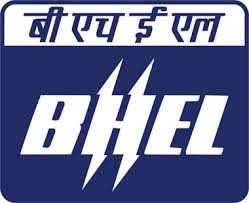 Bharat Heave Electrical Ltd (BHEL):
Bharat Heave Electrical Ltd (BHEL):
BHEL was established in 1964. Heavy Electricals (India) Limited was merged with BHEL in 1974. In 1982, it entered into power equipments, to reduce its dependence on the power sector. It developed the capability to produce a variety of electrical, electronic and mechanical equipments for all sectors, including transmission, transportation, oil and gas and other allied industries. In 1991, it was converted into a public limited company. By the end of 1996, the company had handed over 100 Electric Locomotives to Indian Railways and installed 250 Hydro-sets across India.
BHEL is a power plant equipment manufacturing company and operates from New Delhi, India. The Company is engaged in the design, engineering, manufacture, construction, testing, commissioning and servicing of a range of products and services for the core sectors of the economy, including power, transmission, industry, transportation, renewable energy, oil and gas and defense. It operates in power and Industry segment. It is a manufacturer of Power generation equipment, supplying a wide range of products and systems for thermal, nuclear, gas and hydro-based utility and captive power plants. It is also a manufacturer of a range of industrial systems and products. Products and systems supplied by the Company include captive power plants, centrifugal compressors, drive turbines, industrial boilers and auxiliaries, waste heat recovery boilers, gas turbines, pumps, heat exchangers, electrical machines, valves, heavy castings and forgings, electrostatic precipitators and seamless steel tubes. The company has been earning profits continuously since 1971-72 and paying dividends uninterruptedly since 1976-77. BHEL was conferred Maharatna status in 2013.
 Coal India Ltd:
Coal India Ltd:
Coal India Limited (CIL) was established in November 1975 with the government taking over some big private coal mines. With a modest production of 79 Million Tones (MTs) at the year of its inception CIL today is the single largest coal producer in the world. Operating through 81 mining areas CIL is an apex body with 7 wholly owned coal producing subsidiaries and one mine planning and Consultancy Company spread over 8 provincial states of India. CIL also fully owns a mining company in Mozambique in Africa christened as ‘Coal India Africana Limited’. CIL also manages 200 other establishments like workshops, hospitals etc. Further, it also owns 26 technical & management training institutes and 102 Vocational Training Institutes Centers known as Indian Institute of Coal Management (IICM) as a state-of-the-art Management Training and Centre of Excellence. CIL having fulfilled the financial and other fundamentals was granted the Maharatna recognition in April 2011.
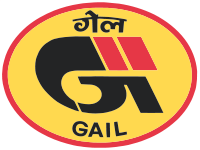 Gas Authority of India Ltd (GAIL):
Gas Authority of India Ltd (GAIL):
It is the largest state-owned natural gas processing and distribution company in India. It’s headquartered in New Delhi. GAIL runs business segments such as Natural Gas, Liquid Hydrocarbon, Liquefied petroleum gas, Transmission, Petrochemical, City Gas Distribution, Exploration and Production, GAILTEL (a telecommunication subsidy of GAIL) and Electricity Generation. GAIL has been conferred with the Maharatna status on 1 Feb 2013. The Company is engaged in transport of gas through pipeline; manufacture of basic chemicals, fertilizer and nitrogen compounds, plastics and synthetic rubber in primary forms; extraction of crude petroleum; extraction of natural gas and electric power generation, transmission and distribution. The company operates in 20 exploration blocks in Mahanadi, Mumbai, and Cambay, Assam-Arakan, Tripura Fold Belt, Gujarat Kutch, Krishna Godavari, Cauvery, and Cauvery Palar basins. Further, the company offers long term lease of dark fiber and duct, tower space and collocation facilities, and point-to-point leased line bandwidth services through its 13,000 km OFC network; and generates electric power through a joint venture. It owns approximately 10,900 km of natural gas pipelines.
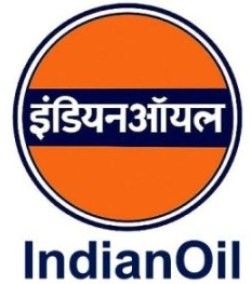 Indian Oil Corporation Ltd (IOL):
Indian Oil Corporation Ltd (IOL):
This is India’s flagship oil company with business spanning the entire hydrocarbon value chain; refining, pipeline transportation of oil, petroleum products, exploration of crude oil and gas, wind mill and solar power generation. The Company’s product include Indane gas, Auto gas, natural gas, petrol/gasoline, diesel gas oil, ATF/Jet fuel (this is a type of aviation fuel designed for use in aircraft powered by gas-turbine engines. It is colorless to straw-colored in appearance), Servo lubricants and greases, marine fuels and lubricants, kerosene, bulk/industrial fuels, bitumen, petrochemicals, special products and crude oil. The Company’s subsidiaries include Indian Oil (Mauritius) Ltd, IOC Middle East FZE, IOC Sweden AB, IOCL (USA) INC, Chennai Petroleum Corporation Ltd and Lanka IOC PLC. The company is awarded Maharatna status in November 2010.
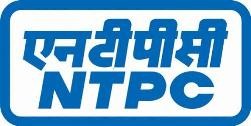 National Thermal Power Corporation LTD (NTPC):
National Thermal Power Corporation LTD (NTPC):
This a company engaged in the business of generation of electricity and allied activities. NTPC’s core business is generation and sale of electricity to state-owned power distribution companies and State Electricity Boards in India. The company also undertakes consultancy and turnkey project contracts that involve engineering, project management, construction management and operation and management of power plants. The Company’s other businesses include providing consultancy, project management and supervision, oil and gas exploration, and coal mining. The Company’s projects under construction include Bongaigaon-I with a capacity of 750 Megawatts (MW), Barh-I with a capacity of 1,980 MW, Barh-II with a capacity of 1,320 MW, Gadarwara with a capacity of 1,600 MW, and Rihand with a capacity of 500 MW. The Company has an installed capacity of approximately 42,000 MW. The Company’s subsidiaries include NTPC Electric Supply Company Limited, NTPC Vidyut Vyapar Nigam Limited, NTPC Hydro Limited, Kanti Bijlee Utpadan Nigam Limited and Bhartiya Rail Bijlee Company Limited. It has been conferred upon Mahartna status in 2010.
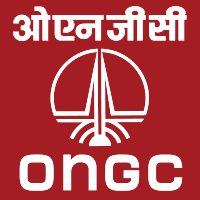 Oil & Natural Gas Corporation Ltd (ONGC):
Oil & Natural Gas Corporation Ltd (ONGC):
ONGC is an Indian PSU multinational oil and Gas Company headquartered in Dehradun, India under the administrative control of the Ministry of Petroleum and Natural Gas. It is India’s largest oil and gas exploration and production company. It produces around 69% of India’s crude oil (equivalent to around 30% of the country’s total demand) and around 62% of its natural gas. ONGC has produced more than 600 million metric tons of crude oil and supplied more than 200 billion cubic meters of gas since its inception. Today, ONGC is India’s highest profit making corporate. It has a share of 77 percent in India’s crude oil production and 81 per cent in India’s natural gas production. The Company is mainly engaged in the oil exploration and production activities. The Company operates in two segments: Offshore and Onshore. Its subsidiaries include ONGC Videsh Limited (OVL), Mangalore Refinery & Petrochemicals Ltd., ONGC Nile Ganga BV, ONGC Narmada Limited, ONGC Amazon Alaknanda Limited, ONGC Campos Ltda, ONGC Nile Ganga (Cyprus) Ltd. and ONGC Nile Ganga (San Cristobal) B.V. It is been conferred Maharatna status in 2010.
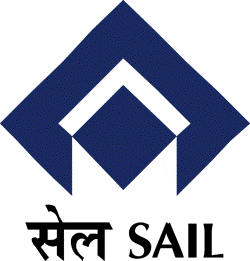 Steel Authority of India Ltd (SAIL):
Steel Authority of India Ltd (SAIL):
SAIL is India’s largest steel producing company. With a turnover of Rs. 49,350 crore, the company is among the seven Maharatnas of the country’s Central Public Sector Enterprises. SAIL has five integrated steel plants, three special plants, and one subsidiary in different parts of the country. SAIL operates and owns 5 integrated steel plants at Rourkela, Bhilai, Durgapur, Bokaro and Burnpur and three other special steel plants at Salem Durgapur and Bhdravati. It also owns a Ferro Alloy plant at Chadrapur. As part of its global ambition, the company is undergoing a massive expansion and modernization programe involving upgradation and building new facilities with emphasis on state of the art green technology. Besides, it has R&D centre for Iron & Steel (RDCIS), Centre for Engineering and Technology (CET), Management Training Institute (MTI) and SAIL Safety Organization (SSO) located at Ranchi, the capital of Jharkhand. SAIL traces its origin back in the Hindustan Steel Limited (HSL) which was set up on 19 January 1954. HSL was initially designed to manage only one plant that was coming up at Rourkela.
The Government of India had proposed an equal joint venture between state-owned Steel Authority of India Ltd (SAIL) and South Korea’s Posco for a steel plant in 2011. The Government of India may now abandon their planned joint venture with POSCO to set up an Rs 16,000-crore steel plant in Bokaro, Jharkhand, as the two firms failed to reach a common ground over the share of ownership. The agreement is yet to be signed and differences between the two companies are out in the open with both insisting on having a controlling right over the proposed joint venture, a demand that looks difficult as both rushing to control their partnership plan for setting up a 3-million tons per annum (mtpa) steel plant at Bokaro in Jharkhand. SAIL is also conferred upon Maharatna status in 2010.












































